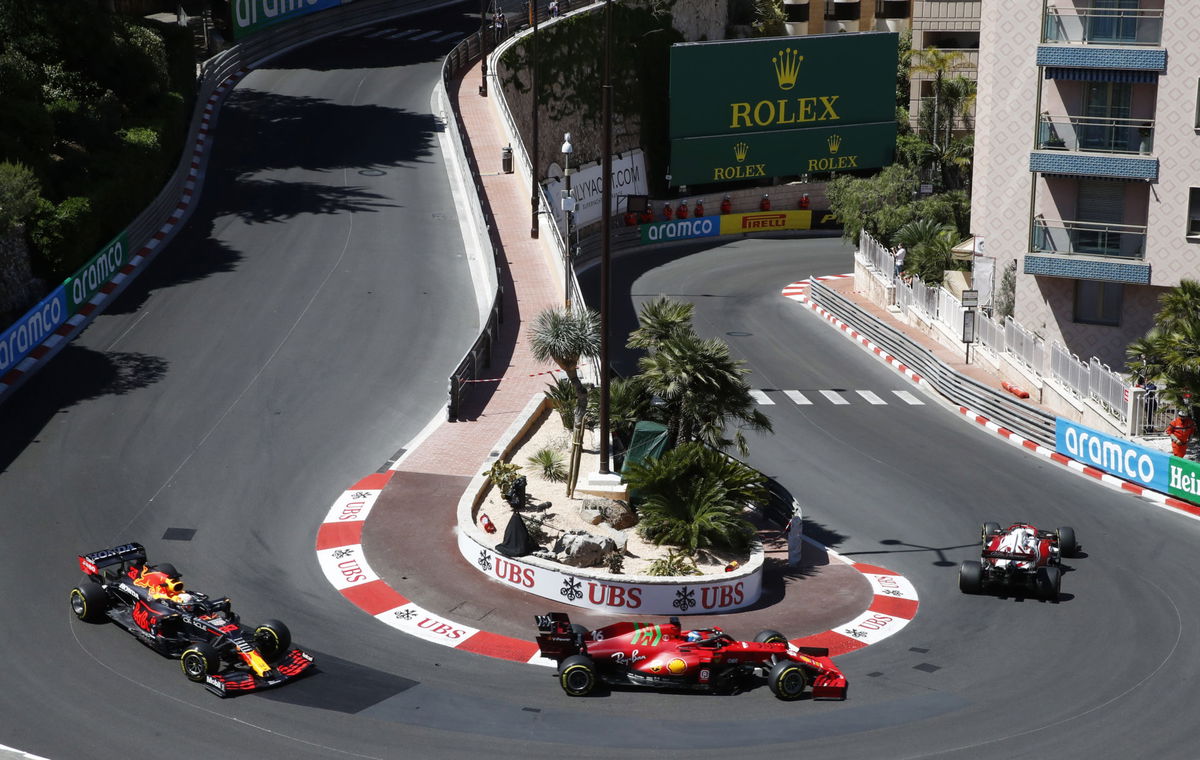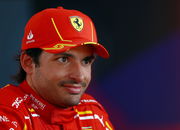
Reuters
Formula One F1 – Monaco Grand Prix – Circuit de Monaco, Monte Carlo, Monaco – May 20, 2021 Ferrari’s Charles Leclerc and Red Bull’s Max Verstappen in action during practice REUTERS/Gonzalo Fuentes

Reuters
Formula One F1 – Monaco Grand Prix – Circuit de Monaco, Monte Carlo, Monaco – May 20, 2021 Ferrari’s Charles Leclerc and Red Bull’s Max Verstappen in action during practice REUTERS/Gonzalo Fuentes
Max Verstappen started on pole for the Emilia Romagna GP and won the race. It wasn’t one of Verstappen’s Sunday drivers where he won by a postcode. In fact, the Dutchman only beat Lando Norris by 8 tenths. Many thought McLaren’s win in Miami was because of Verstappen and Red Bull’s tire struggles and that it was a one-off thing, but no, the pace of the Papaya team is real.
Watch What’s Trending Now!
While some light showers were predicted for the race in Imola, they never really arrived during the race. But thankfully, Norris made the race interesting for the fans. Now, we move on to the Monaco GP, the second race of the doubleheader and the crown jewel of the F1 calendar. Arguably, it is the most exclusive and anticipated event of the year, testing the drivers to the limit. One little mistake can ruin the whole weekend.
And that is exactly what happened with Charles Leclerc in 2021, when he took the pole and crashed in qualifying. During the outlap for the race, he had to retire due to a driveshaft issue from the qualifying crash. There are other aspects too, like a small lockup into Turn, which we see a lot, and boom, you’re in the barrier. Amid all this, the weather also plays a crucial role. So let’s see what the weather might be like for the 2024 Monaco GP.
ADVERTISEMENT
2024 Monaco GP: Light showers might cover the weekend.
Monaco is a very small city-state that is sovereign in nature. It is bordered by France’s Alpes Maritime on three of its sides, all of which are low lying mountains and has the Mediterranean Sea on the remaining side. This essentially makes Monaco a small strip of plains between the hills of France and the water body. And this factor plays a crucial role in the weather. The winds that rise from the Mediterranean Sea usually crash into these mountains and can cause spontaneous rainfall in the municipality of Monaco. However, this phenomenon usually happens during the daytime as air moves from sea to land. This cycle is reversed during the night.
Just like most of the coastal cities, even at the best of times, the surety of the weather can only be given the day before. The temperatures at this time of the year remain a pleasant 20–25 degrees Celsius, accompanied by a cool breeze from the Mediterranean bordering the town. As for the race weekend, the weather predictions suggest chances of rain throughout the weekend, from Thursday to Sunday. However, the possibilities are moderate, with 40% being the highest. On Friday, during the practice sessions, the temperatures are expected to go as high as 20° Celsius with a considerable cloud cover over the circuit. The chances of rain are 40%, with winds of 10–15 km/h blowing from the southeast, i.e., from the Mediterranean Sea towards the mountains.
ADVERTISEMENT
⛅️ | 🇲🇨 Early look at weather for Monaco GP weekend
– Some risk of showers in Thursday to Sunday afternoon.
– Some have higher risk of reaching Monaco on Thursday and Saturday.
[@Rodolfoar07] #F1 #MonacoGP pic.twitter.com/htXON8vpie
— RBR News 🇳🇱🇲🇽 (@redbulletin) May 20, 2024
The weather forecast for Saturday is very similar to that of Friday, with temperatures of around 20 °C. The chances of rain drop from 40% to 30%, although the direction and speed of the wind remain the same. The temperatures for Sunday during the main race will be a little higher and are expected to touch the 22°C mark. The chances of rain drop to 13%, and the speed of wind might also reduce. At the moment, rain is most likely to hit the track on Saturday night, before the race.
ADVERTISEMENT
The shower can wash away any rubber laid down by the drivers on the track, making it even more difficult to control the cars on a slippery street surface with 80-odd kg of fuel onboard. Usually, the fuel load is around the 100 kg mark, but Monaco is a shorter race, so here it goes for approximately 80 kg. So, how can the weather affect the car’s performance at Monaco GP?
Top Stories
Language Barrier Didn’t Hold Back Lando Norris to “Hook Up” With OnlyFans Model: “We Talked by Mime”

Who Is Melissa Jiménez – Fernando Alonso’s Love Interest Confirmed by Spanish Media?

Despite Break Up, Lando Norris Gets a Quick Shout Out From His Ex Girlfriend at the End of the Year

Who are Zhou Guanyu’s Parents? Everything We Know About The Chinese Driver’s Family

Carlos Sainz Debunks Biggest ‘Smooth Operator’ Myth After Its Return at Australian GP

Rain and track temperatures drastically change the Monaco GP
Monaco GP does not have a permanent track, it has a street circuit by nature. As the race takes place on the regular streets of the municipality, unlike many other tracks, rubber isn’t deposited into the course by other racing series. In other words, the track grip is very low and builds up over the weekend as F1 cars keep laying the rubber on the surface. Hence, the later a driver goes out on track to set the lap time, the more optimal it becomes.
ADVERTISEMENT
ICYMI: Next up for F1 is Monaco, which was part of the calendar in the first year of the F1 World Championship in 1950 and hasn’t been off it since 1955. Here’s the schedule, track and weather info.#F1 #Fit4F1 #MonacoGP #circuitdemonaco @Pirelli @pirellisport @Pirelli__ME 🇲🇨🏁 pic.twitter.com/yQ2qLGo1v1
— Hive (@hiveprme) May 21, 2024
But combine this factor with the spontaneous rain showers, and the drivers are put in a dilemma. Just like last year in the race, where at first only a couple of corners received it, and then a lap later, the whole track was soaking wet. Not only does the rain affect the laps while the track is wet, but it also washes away any laid rubber on it. Then, it can even drop the track temperature. And as we’ve seen in the last couple of races, the Pirelli’s are super sensitive to temperature ranges.
Max Verstappen did not test the hard tires in Imola during practice. He wasn’t able to get them into the working window during the race. However, Norris did test them and had the data to make them work. It almost cost Verstappen the race. Of course, making a mistake in the rain is that much easier, and the barriers are always staring right in the driver’s face at the Monaco GP.
ADVERTISEMENT
Last year, Fernando Alonso came awfully close to winning, but Aston Martin messed up the strategy. And all because of the spontaneous rain. With that said, do you think we might see a repeat of last year with rain predictions for the weekend? Share your take in the comments.
ADVERTISEMENT
ADVERTISEMENT
ADVERTISEMENT

